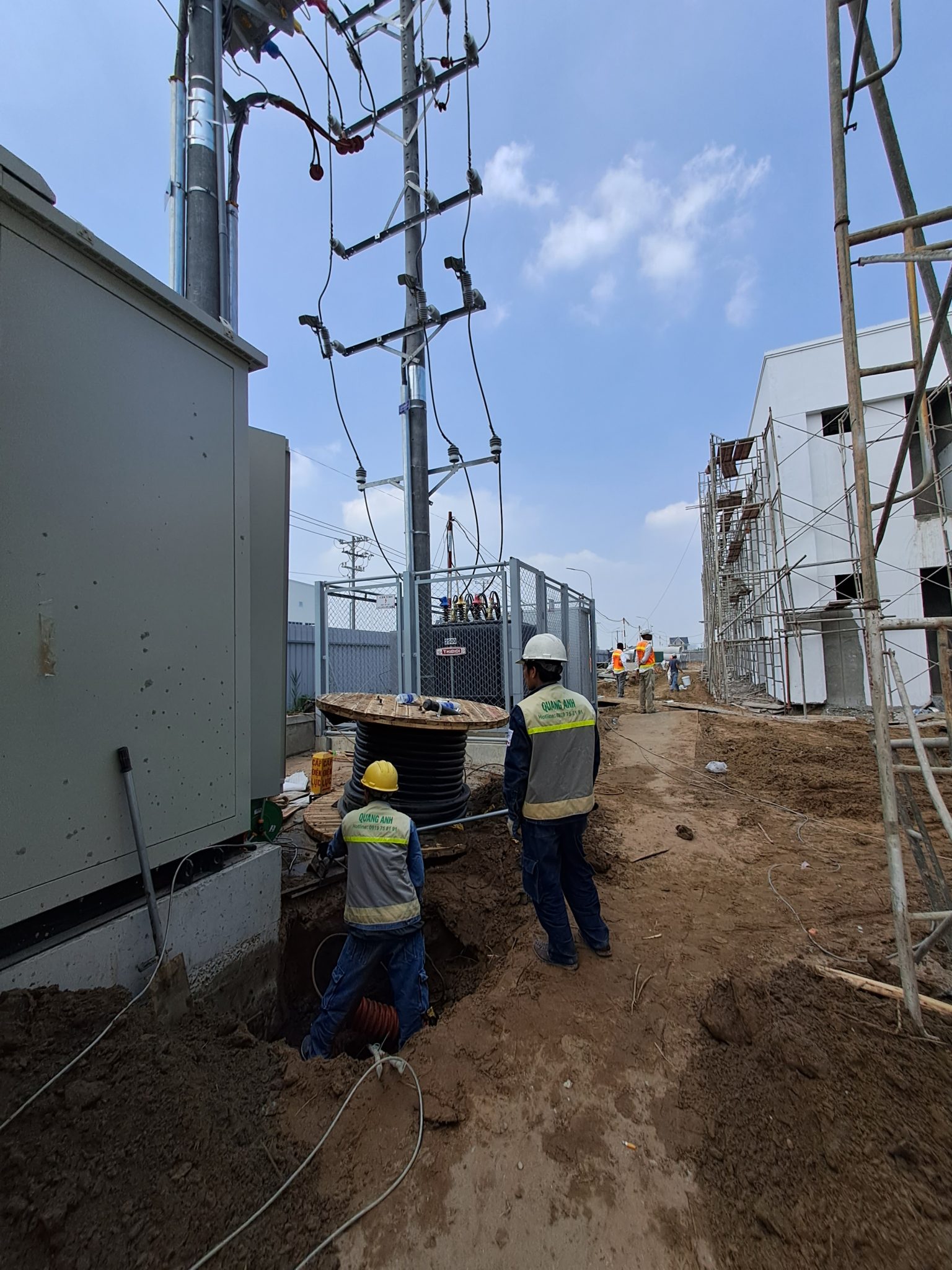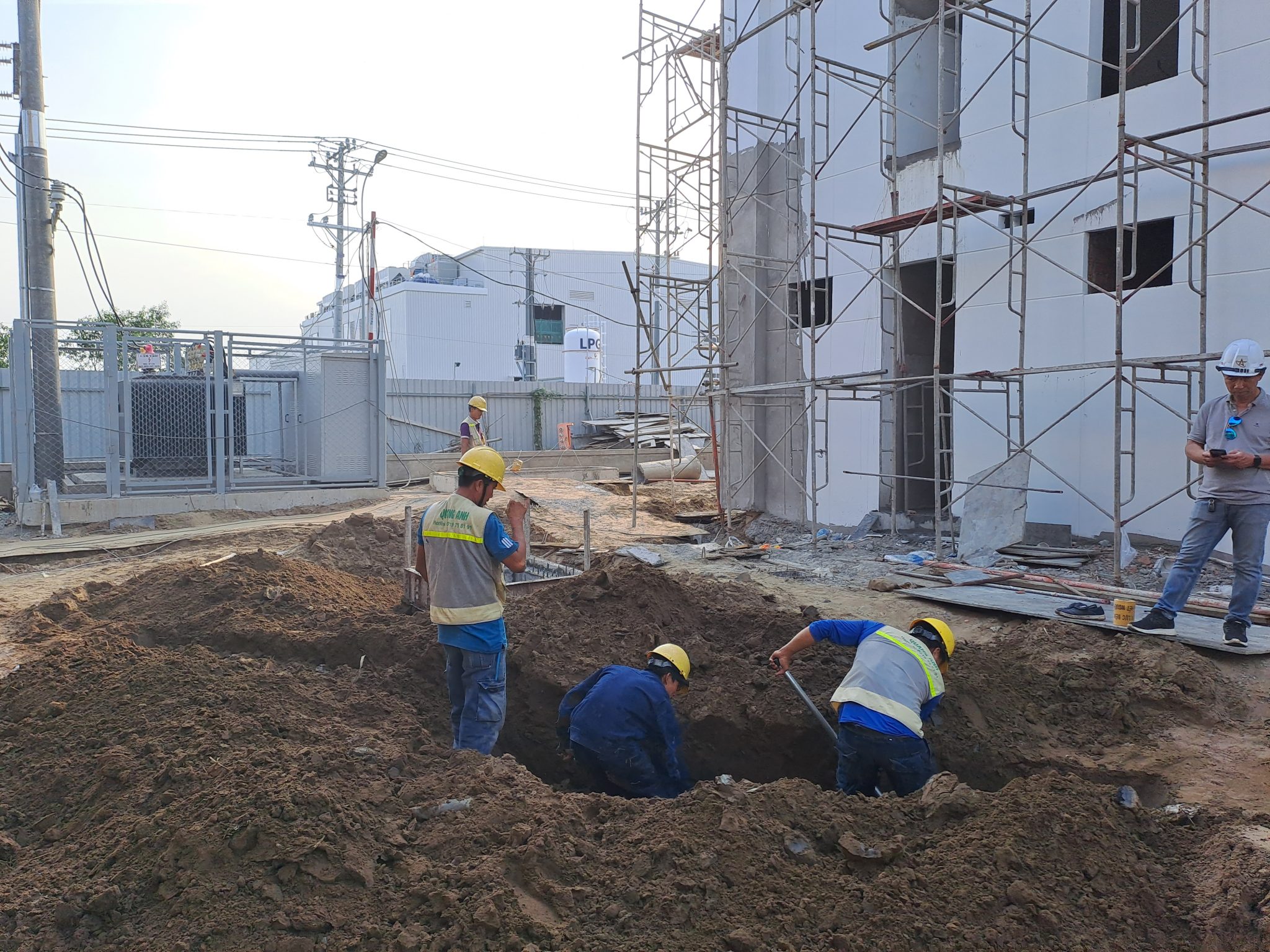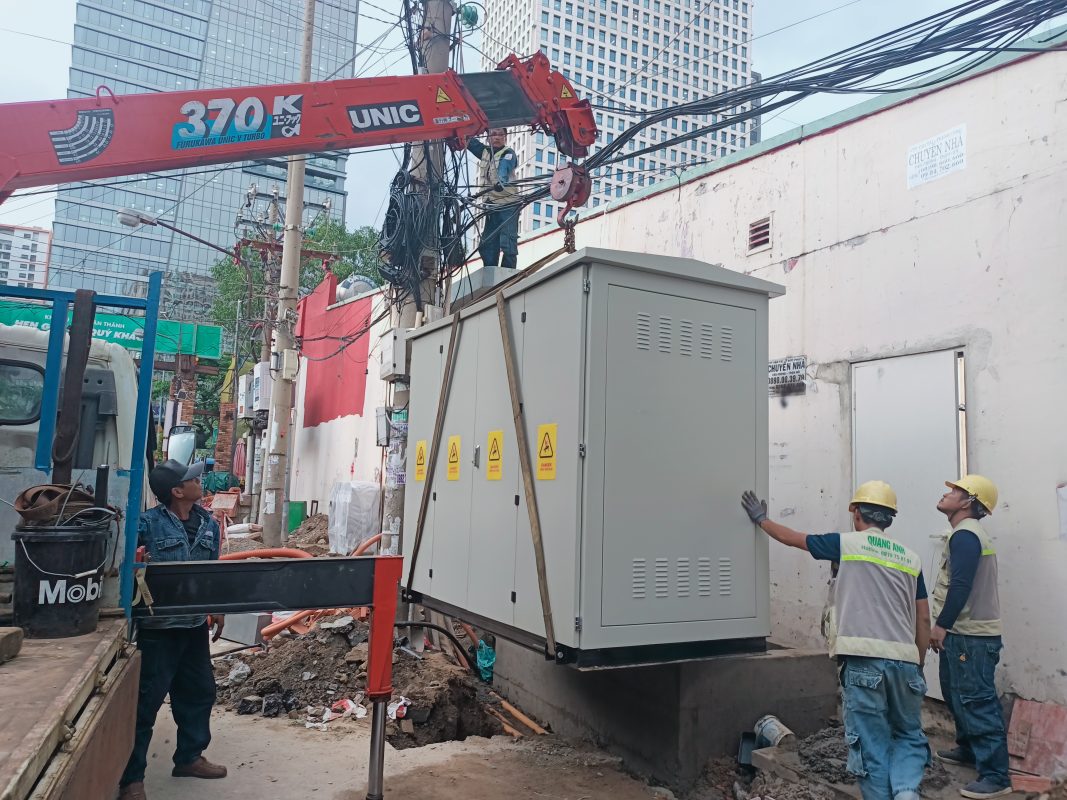On-site transformer oil filtration and pumping services utilize specialized equipment to cleanse and refine oil, removing contaminants, moisture, gases, and harmful elements, thereby restoring and elevating insulation efficiency, reducing corrosion, and extending transformer life.
Transformer Oil Filtration and Pumping Process
The service involves filtering transformer oil using specialized equipment combined with vacuum and heating techniques. Whether dealing with new or used oil, the process extracts impurities, water, and dissolved gases like CO, CO2, O2, and H2. This meticulous approach increases the oil’s discharge voltage from 30kV to 60-80kV, boosting insulation capabilities and preventing failures. The steps include draining old oil, cleaning tanks and pipes, heating, primary filtration to remove larger particles, vacuum treatment to separate water and gases, and finally pumping the filtered oil back into the transformer or storage tank.
This process is designed to safeguard and sustain top-notch transformer performance. Throughout usage, transformer oil can accumulate contaminants, moisture, and dissolved gases, adversely affecting dielectric efficiency and device lifespan. Beyond merely removing these pollutants, filtration enhances oil’s dielectric strength, elevating values up to 60-80kV.
The essential steps of the procedure comprise:
-
System Preparation and Cleaning: Before filtration, all oil tanks and pipelines must be thoroughly cleansed with specialized solutions to prevent further contamination.
-
Old Oil Draining and Inspection: Existing oil is drained from the system. Checking the oil quality at the tank bottom helps identify and eliminate large impurities.
-
Oil Heating: Heating the transformer oil maximizes filtration efficacy, expediting moisture separation using infrared or specialized heating units.
-
Primary Filtration: The oil undergoes preliminary filtering to remove particles exceeding 5 micrometers.
-
Vacuum Separation and Dehydration: Utilizing a vacuum oil filtration device, the oil transitions into a mist form, enabling water removal under low-pressure conditions.
-
Fine Filtration: The oil is further refined to remove minute dust particles and dissolved gases.
-
Clean Oil Pumping: Finally, purified and dehydrated oil is pumped back into storage tanks or transformers.
The filtration process employs specialized machines equipped for vacuum extraction, heating, and both coarse and fine filtering. Galvanized and polished oil transmission pipes ensure optimal pressure and purity levels.
Critical technical considerations include:
- Even new oil requires pre-use filtration to remove transportation-related contaminants.
- Transformer oil demands thorough processing to maintain high insulation levels, particularly in moist environments.
Proper transformer oil filtration not only enhances performance but also minimizes system damage and accident risks.

Significance of Oil Filtration Service
On-site transformer oil filtration and pumping services are crucial for maintaining and elevating transformer performance. Left unfiltered, transformer oil can harbor contaminants, moisture, and gases that reduce insulation effectiveness and cause damage. Filtration revives the oil’s insulative properties, preventing rust formation, reducing failure risks due to low dielectric voltage, and prolonging equipment life with optimal efficiency and safety. Conducted on-site, the service saves time and transportation costs while ensuring operational safety.
One key to extending electrical equipment lifespan is regular, proper oil filtration service. Transformer oil, serving as an insulator and coolant, gradually accumulates impurities and moisture during use. These can include dirt particles, dissolved gases, and oxidation byproducts like acids and aldehydes, reducing dielectric capabilities and overheating risks.
To forestall damage, transformer oil filtration targets the extraction of impurities and moisture, thus enhancing insulation efficacy. This service protects the paper insulation layers and internal transformer components, preventing corrosion and rust, sustaining durability while ensuring operational system safety.
Filtration methods, including both online and offline approaches, are adapted to suit varying operational conditions and maintenance objectives, achieving high efficiency and cost effectiveness. Removing water from oil is especially crucial for maximizing insulation performance, given water’s adverse effect on insulation properties.
For large substations, particularly those operating at voltages of 110kV and above, transformer oil filtration has significant benefits, enhancing reliability and security across the entire electrical system.

Equipment Used in Oil Filtration
Effective on-site oil filtration demands advanced machinery like vacuum-enabled and heated oil filtration machines. These devices efficiently remove contaminants, moisture, and detrimental gases from oil. By leveraging cutting-edge technology, the filtration service augments insulation capacity and considerably decreases equipment corrosion, contributing to energy savings and ensuring transformer safety. Moreover, regular checks and maintenance of the equipment guarantee the highest operational standards.
Introduction to Filtration Equipment
Oil filtration is an integral procedure in industrial oil systems, designed to safeguard and maintain equipment performance. Technological advancements have provided more efficient solutions for oil quality improvement, thereby extending equipment lifespan.
Common Filtration Equipment Types
- Hydraulic Oil Filtration Machines: These use oil pumps and filter materials like paper, cloth, or fiberglass to retain contaminants, effectively protecting hydraulic systems.
- Vacuum Oil Filtration Machines: Outfitted with heating filters and vacuum pumps, these systems remove water and gases from oil by exploiting the saturation temperature difference between water and oil.
- Centifugal Oil Filtration Machines: Employing centrifugal force, these machines separate solid and liquid contaminants, suitable for various oil pollution levels.
- Electrostatic Oil Filtration Machines: Utilizing static fields, these remove dispersed impurities in oil, ideal for specialized industries.
- Compressed Air Oil Filtration Machines: Using compressed air pressure to push oil through filter fabrics for rapid impurity removal, suitable for large production lines.
Importance of Filtration Equipment
Utilizing filtration machines like hydraulic oil filters, vacuum oil filters, and others offers technical benefits while optimizing operating costs, extending oil life, and safeguarding systems, with a reduction in frequent maintenance and replacement needs.
Effectiveness of Filter Materials
Filter materials such as specialized filter paper, fabrics, and fiberglass are chosen based on filtration goals and machine types, enhancing overall oil filtration quality.

On-site transformer oil filtration and pumping services not only enhance oil’s dielectric properties but also reduce equipment corrosion, increase safety, and optimize operational efficiency. With advanced oil filtration technology, maintenance costs are optimized while sustaining robust electrical systems.
Contact QuangAnhcons for detailed consultation on on-site transformer oil filtration and pumping services at hotline: +84 9 1975 8191.
QuangAnhcons provides on-site transformer oil filtration and pumping services to treat and refine oil by eliminating impurities, water, and harmful gases, thereby improving insulation efficiency and extending equipment life.
[contact-form-7 id="7239967" title="Contact form 1"]


Related Posts
Tay Ninh Solar Power Planning: Technical Framework, Grid Interconnection, and Rollout Roadmap
Technical overview of solar planning in Tay Ninh: irradiation, grid capacity, permitting, design, operations, and [...]
Dec
Binh Duong Solar Planning: Regulatory Framework, Grid Interconnection, and an Implementation Roadmap for Factories and Industrial Parks
An overview of Binh Duong solar planning: legal framework, interconnection, design, risk management, and an [...]
Dec
Solar Farm Repair: O&M Workflow, IV Curve Diagnostics, Thermography, Inverter Service and Utility-Scale Safety
A utility-scale solar farm repair plan centered on O&M, IV curves, thermal imaging, inverter service, [...]
Dec
Dong Nai Solar Power Plan 2023–2025: Tri An 1,029 MW, Grid Upgrades and the DPPA Pathway
A complete look at Dong Nai’s solar power plan: Tri An 1,029 MW, irradiation potential, [...]
Nov
Quang Ngai Solar Power Plan 2024–2030: Legal Framework, Irradiance Potential, and Development Roadmap
A complete look at Quang Ngai’s solar power plan: capacity targets, irradiance (PVout), development zones, [...]
Nov
Solar Damage Assessment Services: On-Site Procedures, EL/IV/Thermography Testing & Compliance with Standards
Discover IEC/UL/NEC standard solar damage assessment processes: on-site evaluation, EL and IV curve testing, thermal [...]
Nov
Comprehensive Package Estimate for a 1800MVA 500kV Substation: Scope, Configuration 3x600MVA, Standards and Timeline Management
An overview of the 1800MVA 500kV substation estimate: construction scope, configuration 3x600MVA, GIS/AIS, SCADA, standards, [...]
Nov
Factory Electrical Systems: Comprehensive Design and Implementation Guide
Discover the detailed and safe process of factory electrical systems design and implementation. [...]
Oct
Blueprints Required for Factory Construction Permits
Discover the necessary blueprints in factory construction permit applications, from floor plans to electrical and [...]
Oct
What Are the Requirements for a Factory Construction Permit? A Comprehensive Guide
Explore the documentation and steps needed to secure a factory construction permit for streamlined project [...]
Oct
Factory Construction Permit Procedures in Vietnam: Essential Guidelines and Documents
Learn the procedures for securing a factory construction permit in Vietnam, focusing on document preparation [...]
Oct
Key Steps in the Factory Construction Process
Discover the essential steps and requirements for building factories. [...]
Oct
Comprehensive Electrical Substation Solutions by Quanganhcons
Discover the cutting-edge electrical substation solutions offered by Quanganhcons for industrial applications. [...]
Oct
Investment Costs for a 1MWp Solar Power System and Influencing Factors
Explore the investment costs for a 1MWp solar power system in Vietnam and the influencing [...]
Sep
QuangAnhcons: Elevating Wind Energy Solutions
Explore QuangAnhcons' leadership in wind energy and renewable solutions in Vietnam. [...]
Sep
Electrical Contractor Strategies at Becamex Industrial Park
Discover the strategic advancements and partnerships of the electrical contractor at Becamex Industrial Park. [...]
Sep
Investment Insights for 1MW Wind Energy in Vietnam: Costs and Opportunities
Discover the detailed analysis of costs and opportunities for investing in 1MW wind energy projects [...]
Sep
Advanced Electrical Installation Solutions by QuangAnhcons
Explore advanced electrical installation solutions and modern technology with QuangAnhcons. [...]
Sep
Enhancing Industrial Electrical Services with Quanganhcons
Discover Quanganhcons' expertise in industrial electrical services, offering efficient and sustainable power systems. [...]
Sep
Comprehensive MEP Solutions by QuangAnhcons: From Design to Maintenance Excellence
Discover optimal MEP solutions with QuangAnhcons, dedicated to excellence from design through maintenance. [...]
Sep